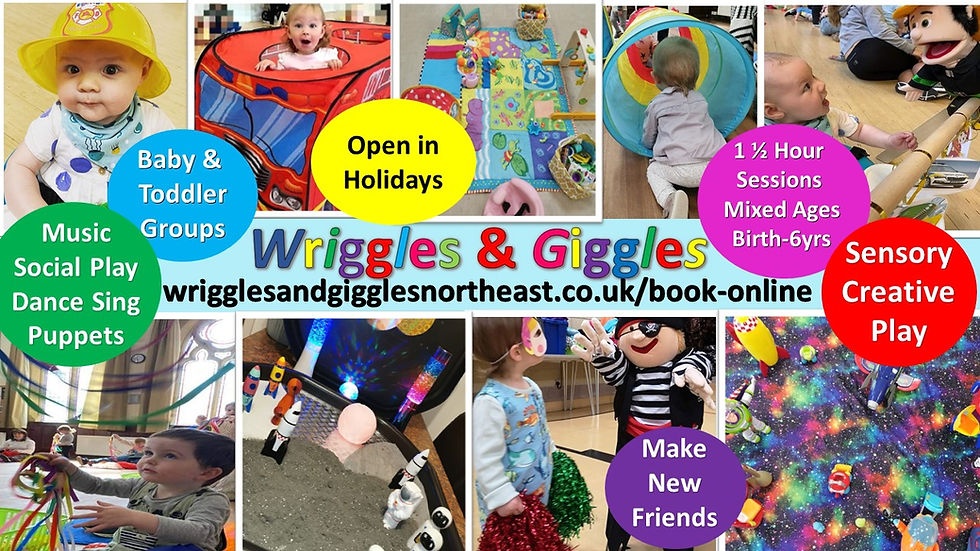Why Do Children Have Imaginary Friends?
- Wriggles & Giggles

- Jun 6, 2022
- 3 min read
Updated: Jul 5, 2024

Pre-schoolers’ imaginary friends may be invisible, but experts say they have some clear benefits. Here’s what parents need to know about these fantastical beings.
Some 65 percent of young children have imaginary friends. They're most likely to pop up during the preschool years, when children have developed the ability for more complex forms of pretend play.
There's no one-size-fits-all standard for these dreamed-up allies. They can be human or completely fantastical. Some stick around for years; others get traded in every few months for a newer model. But what all imaginary friends have in common are the benefits they offer to children.
Why Do Children Have Imaginary Friends?
Pre-schoolers rarely get to call the shots in real life, and that's why they enjoy having complete control over their imaginary friends. If your child's pretend friend is doing something they don't like, your child has the power to change the situation. Plus, it's just plain fun. The sheer joy of creating an imaginary world and populating it can be really appealing to children this age.
It's easy to worry that playing along when your kid asks you to set a place at the dinner table for their panda-bear friend might confuse them about fantasy and reality but this is not the case. Although an imaginary friend may feel as real and special to pre-schoolers as an actual friend, their creators know they're made-up. Parents tend to underestimate the ability of children this age to distinguish between fantasy and reality. In general, by the time children have developed the skills necessary to create an imaginary companion, they have also developed the skills to know that their friend is pretend.

The Benefits of Imaginary Friends
Don't worry your pre-schooler won't become a lonely person who invents friends because they don't have any in real life ones. Research found that not only do children with made-up friends have as many flesh-and-blood friends as other children, but they also tend to be more outgoing.
Imaginary friends help children with everything from problem-solving skills to emotional wellness. Making decisions for their imaginary friends will help them gain confidence. What's more, they often channel their emotions through pretending. An imaginary friend gives you a window into what your child is thinking about and working through. If your child comes to you with news that Mr. Itsy Bitsy is scared of making friends, they're providing you with an important opportunity to talk through something that may be bothering them.
Sometimes it's easier for children to reveal their feelings through a third party, and there's no reason to press them to take ownership of the feelings. Instead, you can ask open-ended questions, like, "Why do you think Mr. Itsy Bitsy doesn't want to meet new friends at school?" Your child may or may not own up to feeling anxious themselves, but you can always ease their worries indirectly. Say, "Yes, sometimes children feel nervous about making new friends, but once they get to school, they realise that the children in their class are really nice, and that it's fun to have someone to play house or Legos with. Do you think Mr. Itsy Bitsy would feel better if he knew that?"

How to Boost Your Child's Imagination
While you can't prompt your child to cook up an imaginary friend, you can provide the opportunity by giving them downtime, quiet, and space. Children need a chance to get a little bored first in order to shift their imagination into high gear and create a friend from thin air, so switch off the television, computer, and video games. It's all about creating a vivid imaginary world, and it can help your child look forward to quiet time so they can invent their own dreamscape.
And remember, not all children develop made-up companions. If yours hasn't acquired any, it doesn't mean they're not creative: it just means that when they don't have someone to play with, they would rather be doing something else, like building with blocks or colouring.





Comments